Nikko Part 2 (Hear No Evil, See No Evil, Speak No Evil)
“See no evil, hear no evil, speak no evil” is a common phrase, usually used to describe someone who doesn’t want to be involved in a situation or that they are turning a willful blind eye to an evil act he is involved in. Sometimes, a fourth component "do no evil" is added to the phrase.

Nikkō (日光市, Nikkō-shi?, lit. sunlight) is a city located in the mountains of Tochigi Prefecture, Japan. Located about 140 km to the North of Tokyo, it is a popular destination for Japanese tourists, housing the mausoleum of shogun Tokugawa Ieyasu (Nikko Toshogu) and that of his grandson Iemitsu, as well as the Futarasan Jinja, a shrine which dates to the year 767. There are also many famous hot springs (onsen) in the area. The mountains west of the city are part of Nikko National Park and contain some of the country's most spectacular waterfalls and scenic trails.
As of the 2005 census, the city has an estimated population of 94,284 and a density of 65.03 persons per km². The total area is 1,449.87 km². The city was founded on February 1, 1954.
 Nikko has beautiful scenery, landscaping and temples. It is a perfect mix of nature and history nestled in between mountains in north-central Japan.
Nikko has beautiful scenery, landscaping and temples. It is a perfect mix of nature and history nestled in between mountains in north-central Japan.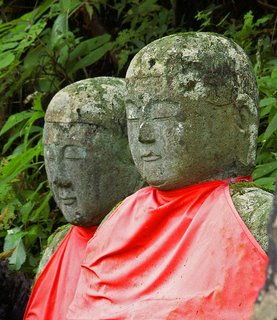
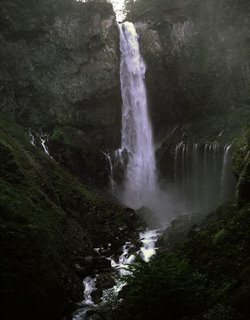
 The god of thunder, Nitenmon Gate, Taiyuin-byo Shrine, Nikko, Japan. (Photograph taken by Michael Reeve, 5 April 2004.)
The god of thunder, Nitenmon Gate, Taiyuin-byo Shrine, Nikko, Japan. (Photograph taken by Michael Reeve, 5 April 2004.)

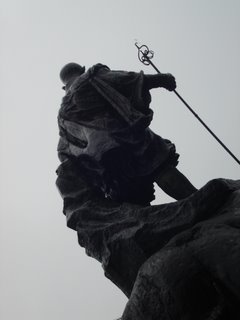



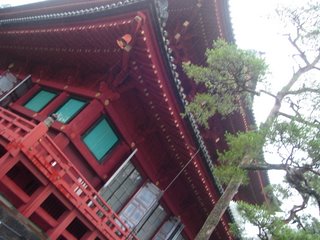

 NIkko beer is delicious!
NIkko beer is delicious!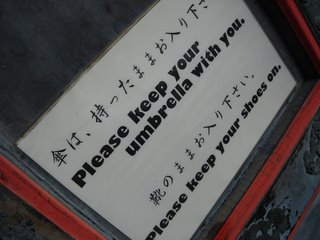
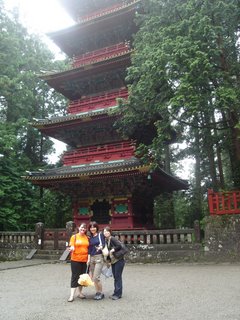
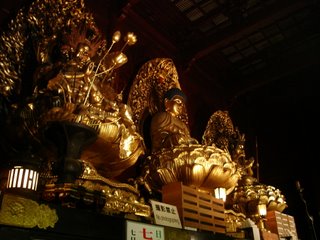 I wasn't supposed to take this one.
I wasn't supposed to take this one. 

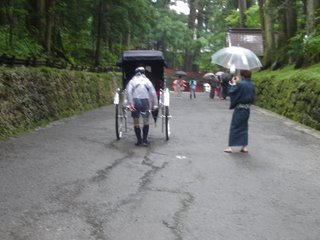






Here we are in Nikko. Below, are the 3 infamous monkeys of Nikko. "Hear no evil, see no evil, speak no evil." We all know the phrase in English, but to see the monkeys behind the phrase gave it whole new meaning to me.

The origins of this phrase are unknown and debated. However, one popular theory exists. Due to the fact that the saying is typically associated with Three Wise Monkeys (one covering his eyes, one covering his ears, and the other covering his mouth) it is believed that the saying may have its origin in a 17th century temple in Japan.
The Nikko Toshogu Shrine, also known as the Sacred Stable, in Japan has a carving of three wise monkeys. Many scholars believe the monkeys were carved as a visual representation of the religious principle, “If we do not hear, see, or speak evil, we ourselves shall be spared all evil.”
The monkeys originated from a Japanese play on words. “See no evil, hear no evil, speak no evil,” translated into Japanese is, “mizaru, kikazaru, iwazaru.”(見ざる、聞かざる、言わざる) The Japanese word for monkey is “saru”, and sounds very similar to the verb-ending “zaru”. Therefore, it is evident how the monkeys may have originated from what one would see as an amusing play on words.
There is criticism of the Japanese-origin theory—mainly because the Three Wise Monkeys do not originate from Japan. In the eighth century A.D. a Buddhist monk from China introduced the three wise monkeys to Japan. They were associated with the deity Vadjra. It is believed that the monkeys’ gestures were a representation of a command of the deity to “see no evil, hear no evil, speak no evil.” However, some disagree with this criticism by claiming the China's cultural impact surely would have integrated with Japan, thus the Japanese version would spring from the earlier, more primitive one resulting in it being in fact, Japanese.
In China, however, a similar phrase exists in the Analects of Confucius: "Look not at what is contrary to propriety; listen not to what is contrary to propriety; speak not what is contrary to propriety; make no movement which is contrary to propriety." (非禮勿視,非禮勿聽,非禮勿言,非禮勿動) One could argue that the phrase was brought into Japan, was altered for simplicity, and became "see no evil, hear no evil, speak no evil, do no evil".
 Just as there is disagreement about the origin of the phrase, there are differing explanations of the meaning of “see no evil, hear no evil, speak no evil.” Some contend that it is a proverb serving as a reminder not to be so snoopy, so nosy, and so gossipy. Others say that it is a warning to stay away from places where immoral acts are taking place. Whatever the origin and meaning of “see no evil, hear no evil, speak no evil,” it is one of the most visual phrases in existence. For many it is difficult, especially in the western world, to not visually associate The Three Wise Monkeys with the mentioned phrase.
Just as there is disagreement about the origin of the phrase, there are differing explanations of the meaning of “see no evil, hear no evil, speak no evil.” Some contend that it is a proverb serving as a reminder not to be so snoopy, so nosy, and so gossipy. Others say that it is a warning to stay away from places where immoral acts are taking place. Whatever the origin and meaning of “see no evil, hear no evil, speak no evil,” it is one of the most visual phrases in existence. For many it is difficult, especially in the western world, to not visually associate The Three Wise Monkeys with the mentioned phrase. 



We are used to trains by now!

Nikko used to be the imperial city. When it was built, the emperor spared no expense. Even the corners of the buildings had personality!

 I loved these dragons!
I loved these dragons!





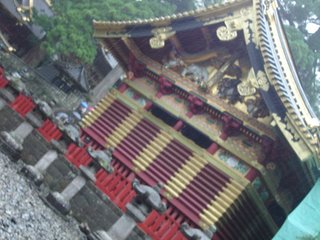





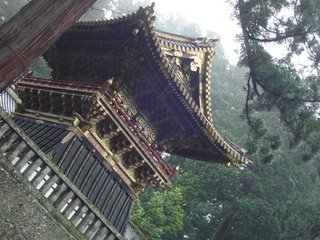
 Moss gardens are everywhere in Japan!
Moss gardens are everywhere in Japan!  The Sleeping Cat: One of the most famous sculptures at Toshogu Shrine is the Nemuri-neko. Set above the entrance of Okusha Inner Shrine in the eastern corridor, this lovely cat is believed to represent a peaceful world. A sculpture of a sparrow is placed on one side of the cat and so, if ever woken, the cat would eat the sparrow - an unlikely event as the cat will supposedly sleep forever.
The Sleeping Cat: One of the most famous sculptures at Toshogu Shrine is the Nemuri-neko. Set above the entrance of Okusha Inner Shrine in the eastern corridor, this lovely cat is believed to represent a peaceful world. A sculpture of a sparrow is placed on one side of the cat and so, if ever woken, the cat would eat the sparrow - an unlikely event as the cat will supposedly sleep forever.
 This Red Monster protecting the gate was MY FAVORITE ONE! Check out his stance. His face! His look! He's like: "yeah, JUST TRY to get past me! HMPH!" and his EYES! Well, they are made of glass. When we went to Nara, we visited the museum with some of the most historical artifacts in Japan. This same monster was also in the museum. The original was made around 800 A.D. and has glass eyes as well. It is amazing to think that an artist in the 8th century can have so much detail in one sculpture. Way before Leonardo Da Vinci or Michaelangelo!
This Red Monster protecting the gate was MY FAVORITE ONE! Check out his stance. His face! His look! He's like: "yeah, JUST TRY to get past me! HMPH!" and his EYES! Well, they are made of glass. When we went to Nara, we visited the museum with some of the most historical artifacts in Japan. This same monster was also in the museum. The original was made around 800 A.D. and has glass eyes as well. It is amazing to think that an artist in the 8th century can have so much detail in one sculpture. Way before Leonardo Da Vinci or Michaelangelo! 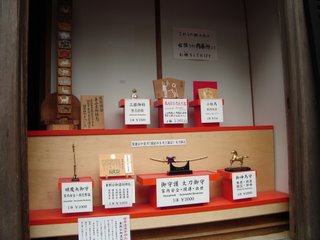

 Mutsuko is so cute coming down the stairs. It seemed like whenever we wanted to travel, it would rain on us! This is what rainy season is all about in Japan. The rain let up about 2 weeks before I had to go back to the States.
Mutsuko is so cute coming down the stairs. It seemed like whenever we wanted to travel, it would rain on us! This is what rainy season is all about in Japan. The rain let up about 2 weeks before I had to go back to the States. The 3 of us traveled all over central Japan together. Here, we are in front of one of the "guard dogs" of the temple. We found these monsters, in different forms and colors at the gates in front of the temples and shrines.
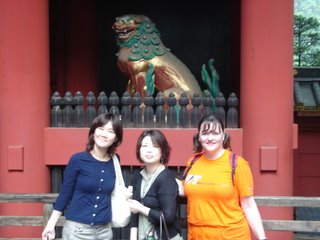
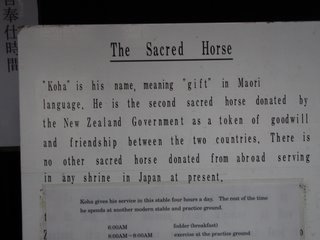
 I bought a "temple book" when I went to the festival in Kawasaki (see the Kanamari Matsudai posting). Each time I went to a new temple, I would get the book signed. I finished my book the very last week I was in Japan: at one of my favorite temples: Kameido.
I bought a "temple book" when I went to the festival in Kawasaki (see the Kanamari Matsudai posting). Each time I went to a new temple, I would get the book signed. I finished my book the very last week I was in Japan: at one of my favorite temples: Kameido. 




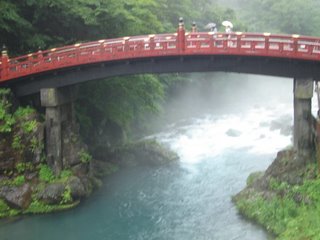
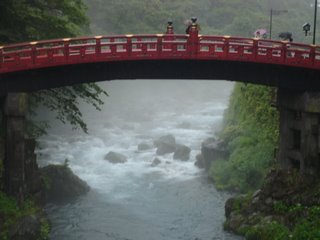
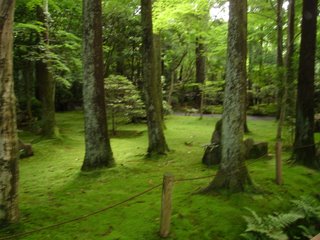

 These statues are plentiful throughout Nikko. I think they represent those spirits passed, but I am not sure.
These statues are plentiful throughout Nikko. I think they represent those spirits passed, but I am not sure. Throughout the summer, Japan has many festivals. Here is one of the festival "floats", although it's not really a float like American's think of floats. It has more religious significance, and rests in the temples when it's not on festival duty.
Throughout the summer, Japan has many festivals. Here is one of the festival "floats", although it's not really a float like American's think of floats. It has more religious significance, and rests in the temples when it's not on festival duty.



 They make SAKE at the Temple, too. The monks know how to have fun! Here are some empty sake barrels.
They make SAKE at the Temple, too. The monks know how to have fun! Here are some empty sake barrels. 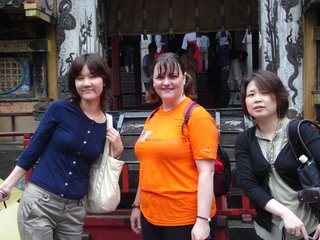
 It was a perfect day!
It was a perfect day!

0 Comments:
Post a Comment
<< Home